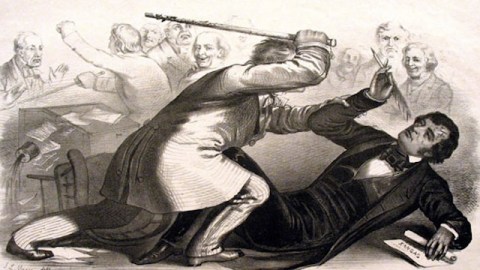The End of Smoke-and-Mirrors Politics?

Who won big in last night’s election? Data. Cold, hard data and the analytical tools to interpret it. The Obama campaign won by leveraging unbelievably detailed information about voters, as Michael Scherer describes today. And those observers who did best at predicting what voters would do (like Nate Silver, who at this writing seems to have gotten the electoral spread exactly right) succeeded the same way—by ignoring all the conventional sources of wisdom and insight and looking at the numbers. This marks, I think, a big and probably permanent shift in the way Americans see politics.
Until now, American electoral campaigns have been run more on hunches and wishful thinking than on detailed information. And people who made their living by politics, or by explaining politics—politicians and ex-pols, campaign professionals, journalists and other chatterers—could say whatever the hell they wanted. They could write mythopoeic hokum like this, or pseudo-numerical prognostications based on their decades-old personal experience, like this. They could engage in wishful thinking (“the crowds are so big!”) or just change the data until it was more congenial.
The discrediting of this kind of hooey this year is a one-day story. But the source of that discrediting is a long-term big deal. The notion that political analysis should depend on data has raised the bar. Those who use cargo-cult reasoning (“Republicans haven’t won since 1972 unless there was a Bush on the ticket”) or unprovable bromides (“the American people seem to want divided government”) are going to look less and less respectable. From now on, I suspect, pundits will have to back up their claims with actual information derived from actual voters. (Which among other things means, as Bob Wright astutely observed the other day, that we’ll be paying more attention to data-gathering methods—to poll quality as well as poll results.) Nor will it be permissible any more to say, well, because I don’t know anything, nobody knows anything. The reply will be, well, there is data out there, why can’t you make sense of it?
Future campaigns will drive the change, I expect. Scherer’s fascinating piece describes how the Obama campaign (which actually had a guy with the title “chief scientist” overseeing data operations) created a tremendous resource this cycle—a single massive database with information from “pollsters, fundraisers, field workers and consumer databases as well as social-media and mobile contacts.” Want to know why the Obama campaign sent you those emails with contests for a dinner with the President? Because tests showed people liked them. Why was George Clooney included in one? Because West Coast women ages 40 to 49 really responded to anything involving Clooney. (Romney’s campaign, to judge by this post, also attempted to leverage data, but didn’t quite pull off the technical feats required.)
I experienced this “measure everything” approach myself yesterday, when I spent three hours as part of the Obama campaign’s “ground game.” I was calling people in Ohio and asking if they had voted. In 2008, we volunteers worked from paper printouts. This year we sat at netbooks linked to a central calling system, which robo-dialled numbers. Whenever the system detected a live human being (rare, given that Ohioans have been fielding these calls for months), the voter’s name and gender and age would appear on my screen, and I would launch into my spiel. It was well-designed (any idiot, ie me, could master the job in 10 minutes), technologically sophisticated, and, above all, based on a constant stream of measurements and on-site reports. (For example, we called from phones with Ohio area codes—previous weeks had shown that response rates to out-of-state callers were too low.)
As the campaigns become more about data, so the chatterers must follow. Especially since the most successful among them (Nate Silver at the fore) are going the same way.
Already, some are complaining that this is a bad development because it steers people away from talking about issues and gets them thinking about the horse race. That’s Jason Zengerle’s argument over at Daily Intel. But this objection confuses the appearance of rational political decisions with actual rationality. Which is why I’m writing about it on this blog, which, despite what some commenters have written, is not about how cool it is to be irrational. (Rather, my subject is this: I think that faith in reason has bestowed on us a great many valuable things, like elections, courts, civil rights and markets. So we should be thinking about how to keep those things after we’ve concluded that our faith in reason is exaggerated.)
Voters give the appearance of rationality when they talk about issues and discuss whose positions they prefer. But the evidence for people’s coherence and consistency on “the issues” is just not there. And, anyway, any campaign’s discussion of “the issues” isn’t a Socratic exploration of the challenges that face society. It is a collection of tools designed to win votes, based, more and more, on data about behavior. In other words, whatever people say they think and feel, the campaigns will increasingly work with what they actually do—respond to a come-on from Clooney, or an ad about outsourcing.
Therefore the real campaign is, in fact, the collection and leveraging of data about voters. It’s a sign of healthy realism—of genuine rationality, which wants to evaluate actual evidence with clarity—that people want to know about the actual work of those who want their votes. So it’s a healthy development that they’re interested in polls and models, more than in position papers. Candidates will come and go, but data is here to stay.
Follow me on Twitter: @davidberreby





